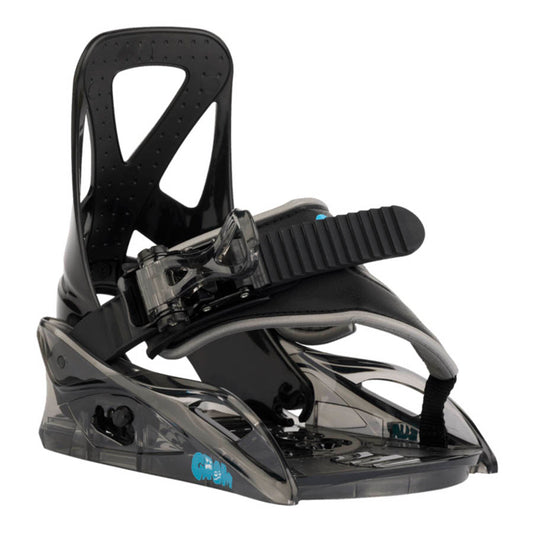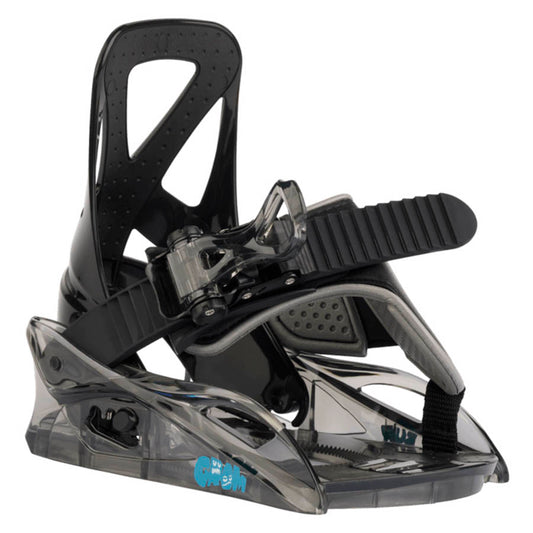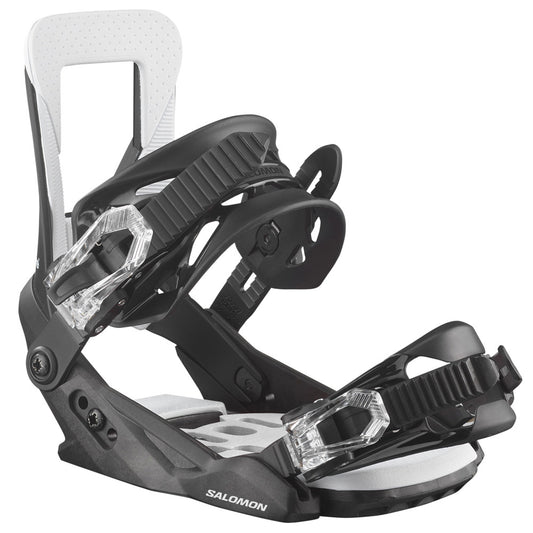Finding the right binding can be a bit of an afterthought compared to buying a board and boots. Yet it’s just as important and can affect how well your board and boots perform too. There are many differences in style, quality, and performance and by using this guide and our filters we can help you choose the perfect ones. It’s as easy as asking a little about yourself, your skills and what you like to do on the mountain.

| Mens | Womens | Kids |
| Men’s bindings tend to fit adult sized boots from 6-15. | Women’s calves sit lower on their legs, and therefore the high backs of their bindings don’t need to come up as high. Also, since women usually have narrower feet, their bindings are made slightly narrower to fit women’s boots better. When you put a women’s boot into a men’s binding, it isn’t as good of a fit. Women end up losing some of the energy transferred to their board because the binding isn’t working as one piece with their boots and a highback that’s too tall will feel restrictive and uncomfortable. | Just like women’s boots, kid’s boots have lower cuffs. Therefore, the high on a kid’s binding also needs to be short enough to accommodate this. Kid’s bindings are also narrower and sometimes only have one strap so they’re easier for a kid to do themselves. |
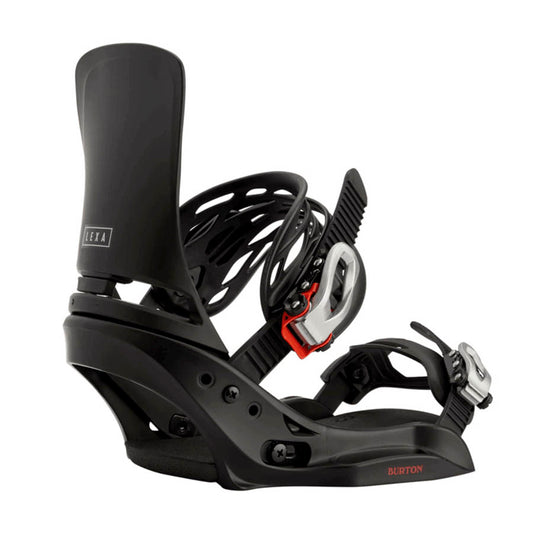
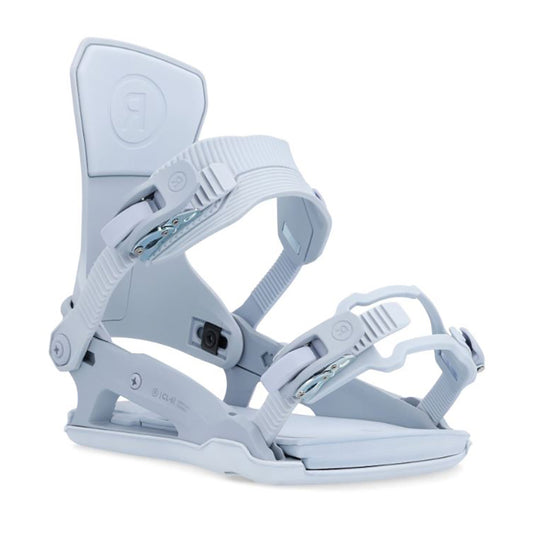
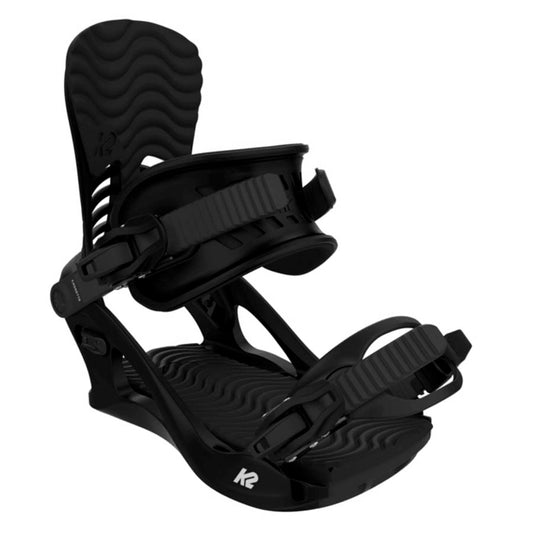
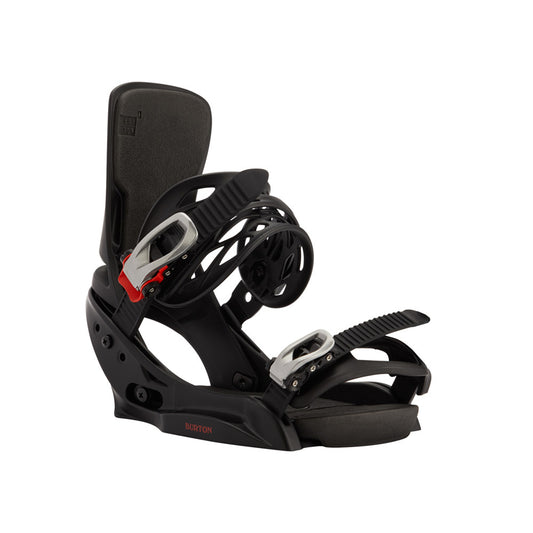

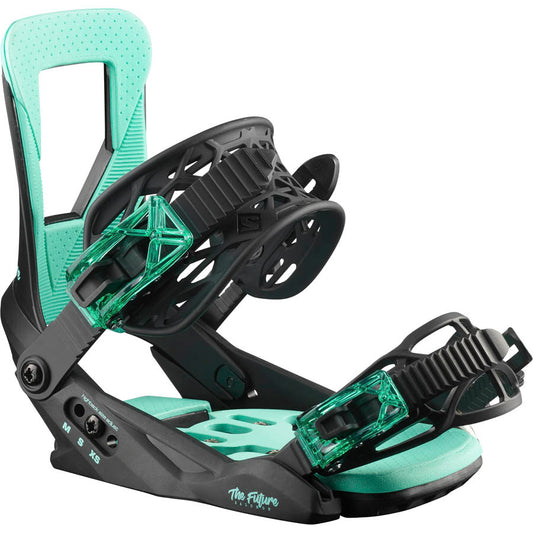
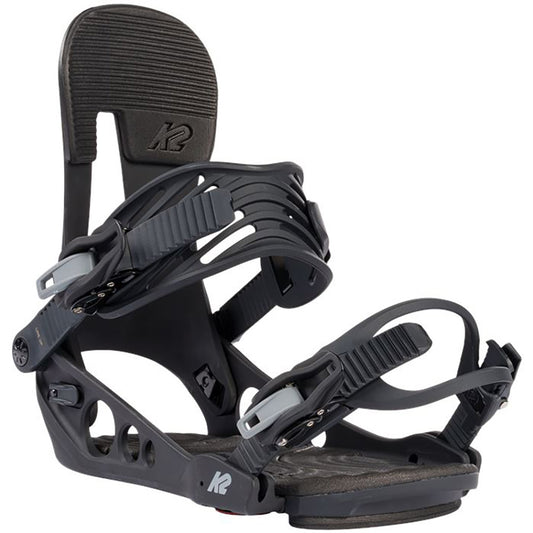

You’ve probably seen various styles of bindings and have questions regarding which is the best for you. The majority of what you will see today will be a traditional strap in bindings, but there are also a variety of other options on the market as well.

Still the most common binding style out there, Strap In bindings have held on since the beginning of snowboarding. The design simply involves strapping a boot onto baseplate with a highback using a toe strap and an ankle strap with ratchets. Over the years strap-ins have evolved greatly with various levels of quality and differences in features and materials. A Strap In binding will fit any snowboard boot, although manufacturer’s boots generally fit their bindings the best.

They’re back? If you’ve snowboarded for a long time you may remember the old Step In system that involved stiff boots with bails or click in attachments on the bottom. Those systems are gone but new ones that work much better now exist. Burton’s “Step On” system utilizes boots that are built with a similar flew to traditional ones but click into the highback of the binding as well on either side of the forefront of the boot. K2 also has a system on the market. These new versions of Step In bindings give the rider a boot they can flex and a system that can handle ice or snow buildup which are complaints against the old systems. They are fast and now just as efficient as a traditional binding but require specific boots to work with them.

Some people want the convenience of Step In bindings, but just prefer the traditional feels of straps. A few brands such as Flow, K2 and Gnu have found ways to address this need. These bindings have straps similar to a traditional binding but the highback of the binding releases, allowing you to slide your boot in through the back of the binding. Once you’re in you simply pull the highback up and latch it into place. It’s fast and easy and you can use whatever boots you want with them.
While the differences may be a bit less noticeable than with the board itself, bindings can also be classified based on where you want to use them.

These bindings are generally designed for riding groomed trails and vary from soft flexing options for beginners to stiff and aggressive models for the advanced rider.

Freestyle refers to the various types of riding often done in the terrain park including hitting rails, jumps, boxes and other tricks. Bindings designed for this often have softer more springy highbacks and straps are often shaped in a way Read more

The majority of bindings fit into this category. As like with All Mountain bindings these generally vary from soft to stiff as they increase with price, however many medium flexing options still exist at the high end. This is for Read more
This generally represents entry level bindings perfect for the beginner to learn on. Beginners aren’t quite sure of their movements at this point and therefore don’t want the binding to send every little movement they make to the board.
This includes bindings both ideal for the beginner looking to progress as well as the park rider looking for something to learn tricks such as small jumps and boxes on.
Riders looking for a little more performance without something too demanding will find a medium flexing binding ideal. This could be the solid intermediate looking to progress or the advanced rider that simply doesn’t want the drive and response a stiff binding would provide.
Aggressive riders seeking performance will want a stiff binding. A stiff flex means better energy transfer to the board which translates into power and response. If a beginner gets a binding in this category they may find themselves catching their edges and may find it harder to control their board.
Bindings in this category are ideal for the hard charger. This is the rider looking to carve hard turns at high speed and wants the ultimate effortless energy transfer to their board. These are generally found at the top of the line and are the most responsive options out there.


At this level you can usually get yourself into a mid ranged binding. There is usually some form of thicker shock absorbent padding on the plate of the binding and the highback. The straps also are generally a little stiffer and more responsive. Buckles are generally better quality and often aluminum.
This range usually gets you into a good quality binding that will last for a while, and take much more abuse. Features of bindings in this range now vary based on riding style. Shock absorbent pads are sometimes separate from the rest of the padding to give extra cushioning in key locations. Buckles are aluminum and ratchets are stronger and often quicker. Straps are customized to give the support and response expected in only the necessary areas. Overall, these bindings are also usually much lighter as well.
Lastly there’s sizing. Binding sizing is tricky because it is specific to each brand. Once you’ve determined the model you’re interested in, use our brand specific size charts found on each binding product page to determine your size.

